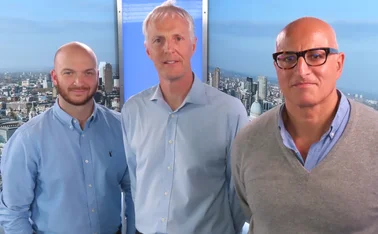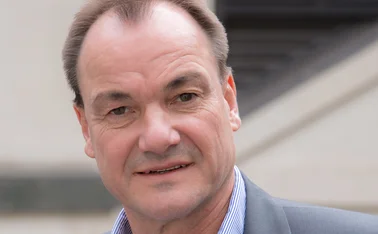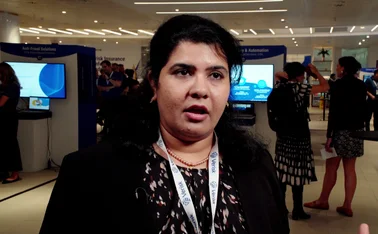
Legal Update: New technology risk in construction

Need to know
- In 199 Knightsbridge Development v WSP UK, the judge ruled engineers should have foreseen flooding risks associated with a new system of pumping water around residential towers
- If a policyholder doesn’t tell their insurer they’ll use unproven technologies, related claims may be rejected
Construction professionals using unproven technologies may inadvertently affect their professional indemnity cover if they fail to disclose all relevant information to their broker and to keep their insurer in the loop, warns Hannah Cane, partner and head of construction professional risks at Bond Dickinson.
New technologies have changed the construction industry on a fundamental level. Last month H and H UK and SIG Offsite unveiled a new housebuilding system that can construct the watertight shell of a standard two-storey house on site within one week. The I House is already winning awards for innovation and is an exciting development for the market.
However, new technologies, of course, always come with risks and, if firms are looking to adopt such innovative solutions, it is important to minimise those risks. For construction professionals, one crucial part of reducing that risk is to ensure they do not inadvertently affect the cover available under their professional indemnity insurance.
It is worth considering an example of what those risks are. In 199 Knightsbridge Development v WSP UK, a high-value residential apartment block was damaged by significant flooding when parts of the cold water pipework failed. The employer claimed this was the fault of its monitoring and evaluation engineer.
The employer and the engineer agreed on the cause of the failure which related to a new system of pumping water around residential tower blocks. They also agreed that neither the mechanical and electrical engineer, nor any other major firm of building services engineers in the UK, had at the time foreseen that this new system could lead to such pipework failures, even though it was obvious in hindsight. The engineer, therefore, argued it could not be negligent because no one had been aware of the problem at the time.
The judge, however, disagreed and decided that the engineer was negligent for failing to appreciate the risks. In this case, even though no engineers foresaw the problem, the judge held that they should have.
As a consequence, if firms want to use new technologies, then they will need to ensure that they do not inadvertently affect the cover available under their PI insurance and that they are still covered if something does go wrong.
In the first instance, firms need to determine the scope of their business. The underwriting basis for PI policies is the information that a firm provides to their broker. That will include information about the type of work undertaken and may include questions around whether a firm intends to use new and unproven technologies, whether they use offsite construction and whether they design and construct modular dwellings. It is important that firms complete this information accurately, bearing in mind that this will form the basis of their policy for the entirety of the next policy period.
Firms must think about what work they might be doing a few months down the line. What if during the course of their policy, they start using new technologies that were not stated on the proposal form? Many policies require notification to insurers of any material change to the information in the proposal form, or any material alteration to the risk. Insurers may then be entitled to amend the policy terms to reflect that new risk. Failure to notify such changes may entitle insurers to refuse cover for any claims that arise out of the work in question. The use of new technologies may in itself require notification to insurers. Therefore, before such work is undertaken, firms need to make sure that they have considered with their broker whether they need to notify their insurers.
In addition, PI policies may contain a number of exclusions which must be considered, for example:
Duty to warn
There may be a duty under the contract to warn the employer about the use of new technology but PI policies sometimes exclude claims that are linked to such liabilities.
Exclusions for faulty manufacturing and defective materials
PI policies normally exclude claims arising out of these. In the case of new technologies, any defects may be in the construction methodologies or the materials themselves, rather than the design.
Indemnity limited to ‘state of the art defence’
This limits the indemnity that insurers provide and assumes a firm can prove that the design in question is in accordance with practice generally accepted as appropriate at the time of the execution of the works having regard to the size, scope and complexity of the project. Some contracts expressly exclude such a defence, in which case firms may be left with a gap in cover.
In short, it is essential to check both the policy wording and contracts to ensure that, where new technologies are being adopted, parties are not inadvertently affecting their cover and leaving themselves exposed.
Only users who have a paid subscription or are part of a corporate subscription are able to print or copy content.
To access these options, along with all other subscription benefits, please contact info@postonline.co.uk or view our subscription options here: http://subscriptions.postonline.co.uk/subscribe
You are currently unable to print this content. Please contact info@postonline.co.uk to find out more.
You are currently unable to copy this content. Please contact info@postonline.co.uk to find out more.
Copyright Infopro Digital Limited. All rights reserved.
As outlined in our terms and conditions, https://www.infopro-digital.com/terms-and-conditions/subscriptions/ (point 2.4), printing is limited to a single copy.
If you would like to purchase additional rights please email info@postonline.co.uk
Copyright Infopro Digital Limited. All rights reserved.
You may share this content using our article tools. As outlined in our terms and conditions, https://www.infopro-digital.com/terms-and-conditions/subscriptions/ (clause 2.4), an Authorised User may only make one copy of the materials for their own personal use. You must also comply with the restrictions in clause 2.5.
If you would like to purchase additional rights please email info@postonline.co.uk








